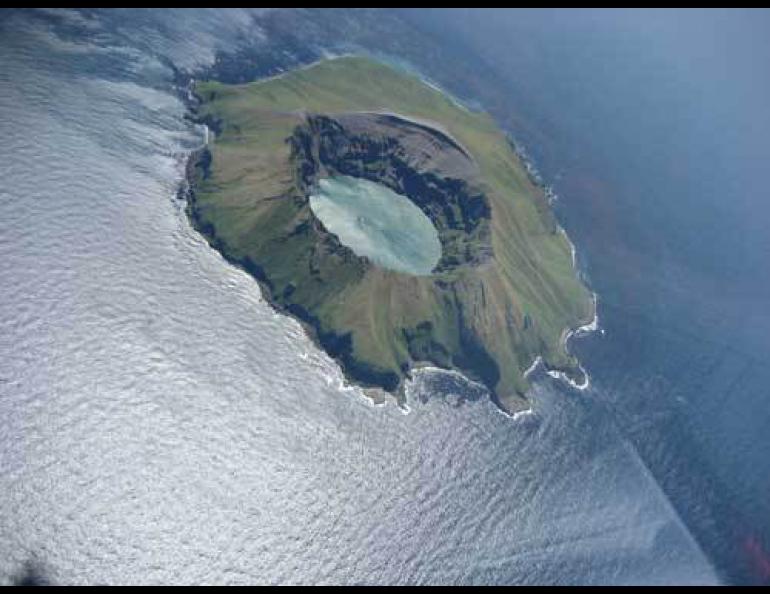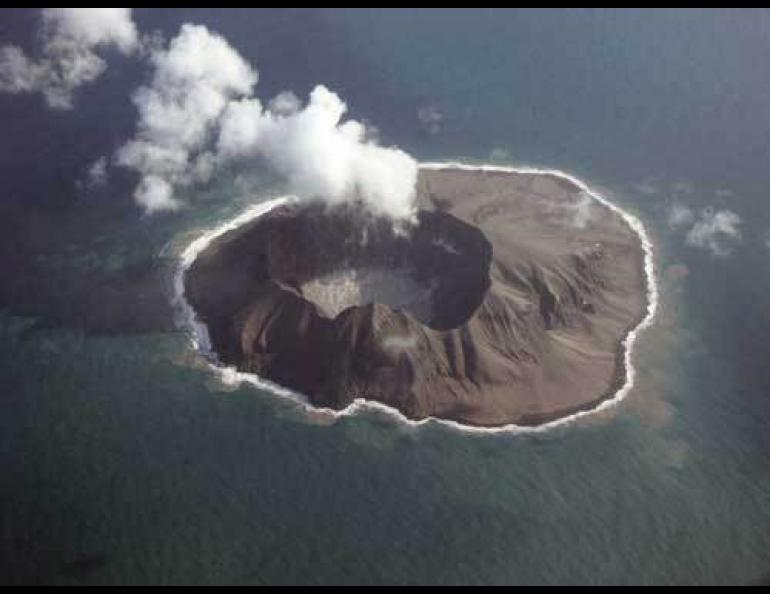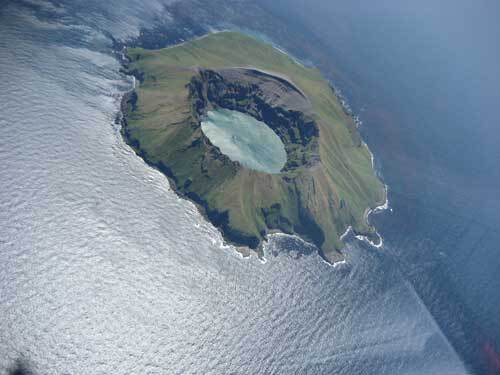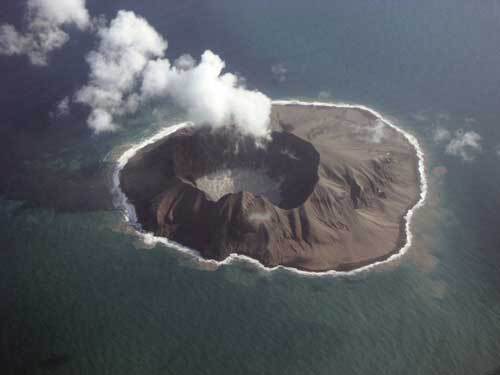
Kasatochi Island grew 31 percent during its eruption on Aug. 7, 2008, losing thousands of seabirds and all its plant life. Kasatochi Island before the eruption.

Kasatochi Island after the eruption. Photos courtesy the Alaska Volcano Observatory, taken by pilot Jerry Morris on July 9, 2008 and October 23, 2008.
More talk of warming in San Francisco
More than 16,000 scientists, a few dozen of them Alaskans, just gathered in San Francisco for the fall meeting of the American Geophysical Union. My bosses at the Geophysical Institute sent me down with them. Here are some of the items that made it into the notebook:
- Though this summer’s melt season didn’t top 2007’s record-low sea ice coverage on the Arctic Ocean, northern ice took another big hit in 2008. This year, researchers saw the second-lowest coverage of the northern seas since satellite measurements began in the late 1970s. “To my mind, the recovery from second worst is no recovery at all,” said Mark Serreze of the National Snow and Ice Data Center in Boulder, Colorado. He said the sea ice is disappearing faster than models are predicting, and the “kick” that sent sea ice reeling might have been a “perfect storm” of natural atmospheric circulation conditions in 2007 that teamed with manmade global warming to compromise the ice. “It’s quite possible we’ll have an ice-free summer (in the Arctic Ocean) by 2030,” he said.
- Pushker Kharecha of Columbia University Earth Institute in New York spoke at a press conference on one of the greatest dangers of a dwindling oil supply—the use of more coal, which releases more greenhouse gases per unit than any other fossil fuel. He and his colleagues, including climate scientist Jim Hanson, recommended three immediate solutions to get carbon dioxide emissions in our atmosphere down to 350 parts per million by the end of the century (CO2 currently makes up about 380 ppm of our atmosphere): Coal emissions should be zeroed out by 2030, we should begin reforestation and halt deforestation, and we need a tax on carbon emissions. “There is still room for optimism,” he said. “There is still time, but not much.”
- The loss of ice mass in Alaska’s Wrangell Mountains almost doubled from 2000 to 2007 when compared to the period from 1957 to 2000, according to Indrani Das of UAF’s Geophysical Institute. Nabesna Glacier had some of the largest ice loss during that time.
- Lightning strikes on Alaska’s North Slope have increased tenfold since the year 2000, according to Gaius Shaver of The Ecosystems Center of the Marine Biological Laboratory in Woods Hole, Mass. Shaver is studying an unusual burn along the Anaktuvuk River north of the Brooks Range. The fire, started from a lightning strike in 2007, charred more than 250,000 acres, becoming the largest recorded fire in Alaska north of 68 degrees latitude since dependable records started in the 1950s. “We can expect things like this to happen more in the future,” Shaver said.
- After its August, 2007 eruption, Kasatochi Island in the mid-Aleutians went from a lush green island with more than 90 percent vegetation cover to a gray, lifeless place with zero percent vegetation cover. It also grew 31 percent, going from 4.84 square kilometers to 7 square kilometers, reported Chris Waythomas of the Alaska Volcano Observatory in Anchorage, who visited the island twice shortly after its eruption.
- The eruptions of Kasatochi, Cleveland, and Okmok volcanoes—all within 320 miles of one another—during a 27-day period in summer of 2008 is an event that happens about once every 1,000 years, said Peter Cervelli of the U.S. Geological Survey Alaska Science Center in Anchorage. Some people wonder if the eruptions were related in some way, maybe reacting to a giant earthquake in the Aleutians in 1957, but Cervelli said the triple eruptions were probably not related. “I’m perfectly comfortable and sleep well at night calling it a coincidence,” he said to people gathered at his poster.






